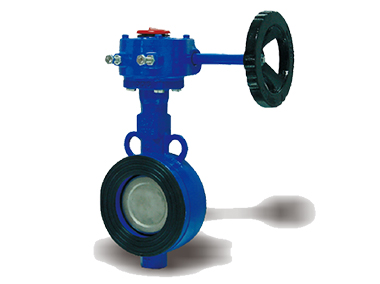Installation and use of butterfly valve
Published:2022-10-07 15:25 Author:admin
The butterfly valve is also called a flap valve. Due to its compact size, it is especially suitable for places where space is limited. It is used in pipelines with large flow and small resistance. At present, the application range of butterfly valves is becoming wider and wider, and it is used in drainage, gas pipelines to regulate flow and interception media in pharmaceutical, biological engineering, chemical, petroleum, electric power, textile, and papermaking fields.
According to the different structural forms, butterfly valves can be divided into offset plate type, vertical plate type, inclined plate type and lever type. According to the sealing form, it can be divided into two types: relatively sealed type and hard sealed type. Among them, the soft seal type generally uses a rubber ring seal, and the hard seal type usually uses a metal ring seal. According to the connection type, it can be divided into flange connection and wafer type connection. According to the transmission method, it can be divided into manual, gear transmission, pneumatic, Hydraulic and so on.
Whether it is a butterfly valve or a good installation of the equipment, it will affect the efficiency of the equipment. Take pneumatic butterfly valve as an example, this is a simple structure, small size, light weight butterfly valve, consisting of only a few parts. It is easy to operate and has good fluid control characteristics. It needs to pay attention to the following aspects during installation.
First, the equipment must be kept dry before installation and cannot be stored in the open. The completeness and status of parts and components should be checked, including the absence of missing parts, correct models, no debris in the valve body, no foreign matter such as welding slag in the pipeline, and no blockage in the solenoid valve and silencer. Valves and cylinders should be closed, etc.
Second, after installation, after installing the cylinder to the valve, you need to check whether the screw holes are aligned and the deviation. If there is a slight deviation, turn the cylinder to adjust it, and then tighten the screw.
The butterfly valve body has moderate manual opening and closing resistance, and the torque of the butterfly valve matches the torque of the selected actuator; the flange specifications for the connection are correct, and the pipe flanges are in line with the butterfly valve flange standards. The industry recommends the use of butterfly valve flanges.
After confirming that the flange welding is correct, do not weld the flange again to avoid scalding the rubber parts. The installed pipe flange should be centered and aligned with the inserted butterfly valve. After installing all flange bolts and tightening them by hand, further confirm that the butterfly valve is aligned with the flange, and then carefully open and close the butterfly valve to ensure flexible opening and closing.
In addition, after the valve is fully opened, the wrench should be used to tighten the bolts in a diagonal sequence without the need for a washer. Do not overtighten the bolts to prevent serious deformation of the valve ring and excessive opening and closing torque.
Third, after the installation is completed, the pneumatic butterfly valve is adjusted (normally, the air supply pressure is 0.4 ~ 0.6MPa). During the debugging operation, the solenoid valve must be manually operated to open and close, and observe the opening and closing of the pneumatic butterfly valve.
If it is found during the commissioning operation that the valve is a bit difficult at the beginning of the opening and closing process, and then it is normal, you need to reduce the stroke of the cylinder. , Then turn off the air source and then adjust) until the valve opens and closes smoothly and closes without leakage.
In addition, it should be noted that the adjustable muffler can adjust the opening and closing speed of the valve, but it cannot be adjusted too small, otherwise it may cause the valve not to operate.
The industry reminds that correct installation is a prerequisite for stable valve operation. At the same time, the user should always keep the equipment clean during use, and the transmission threads must be regularly lubricated. When a fault is found, it should be stopped immediately and the cause should be cleared. At the same time, it is necessary to pay attention to the regular maintenance of the equipment to ensure that the service life of the equipment is extended.


